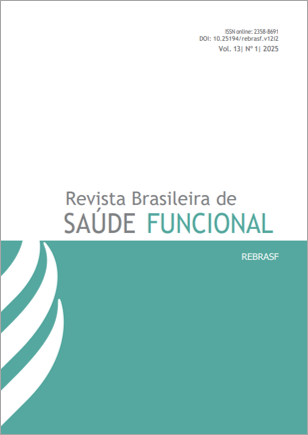Impact of painful characteristics, Anxiety, and Depression symptoms on Quality of Life in Sickle Cell Disease individuals
DOI:
https://doi.org/10.25194/rebrasf.v13i1.2081Abstract
ABSTRACT
Introduction: Sickle cell disease (SCD) is the most common hemoglobinopathy in the world, with 275,000 newborns annually. Hemoglobin polymerization leads to erythrocyte rigidity and Vaso-occlusion, which leads to pain and other changes in the body, seriously affecting the quality of life (QoL) of carriers. Purpose: To analyze the impact of tender points in the body, average pain, Catastrophizing, Central Sensitization (CS), Anxiety, and Depression on the QoL of adults with SCD. Method: This is a descriptive cross-sectional study. It collected sociodemographic data and applied the Brazilian-Portuguese Central Sensitization Inventory, the Brief Pain Inventory, the Hospital Anxiety/Depression Scale, the Brazilian-Portuguese Pain Catastrophizing Scale, and the Short Form Health Survey 36. Statistical analysis was done to define associations (Chi-square or Fisher's Exact) and correlation (Pearson correlation test). The alpha level was 5%, and the Beta of 80%. Results: 100 individuals participate, with genotypes HbSS/HbSC. 69% were women. Age 34.14+10.12 years. Pain intensity 4.20+2.67; 71% had chronic pain; 60% had widespread pain; 59% had CS; 33% had Anxiety; and 18% had Depression. The lowest mean score for QoL was for the Physical Aspect domain (35.55+40.16). Anxiety, Average Pain, CS, and Catastrophizing correlated with all the domains of QoL. Anxiety and CS showed a significant negative influence over the Mental Health domain (F(2.95)=43.014 p< .001; adjusted R2=.464), explaining 46.6% of the outcome. Catastrophizing and CS had a significant negative influence on the General Health Status (F(2.95)=21.592 p<.001; adjusted R2=.298), explaining 29.8% of the outcome; and Anxiety, Pain in lower limbs, and Depression had a significant negative influence on Pain domain (F(2.95)=15.207 p<.001; adjusted R2=.270), explaining 27% of the outcome. Conclusion: Anxiety, Depression, Catastrophizing, and CS are significant factors that impact QoL. In a population of SCD individuals, the primary objective is to control pain, which leads to chronic pain directly affecting these predictors and, inevitably, QoL.
Keywords: Sickle Cell Disease, Quality of life, Central sensitization, Catastrophizing, Depression, Anxiety.


